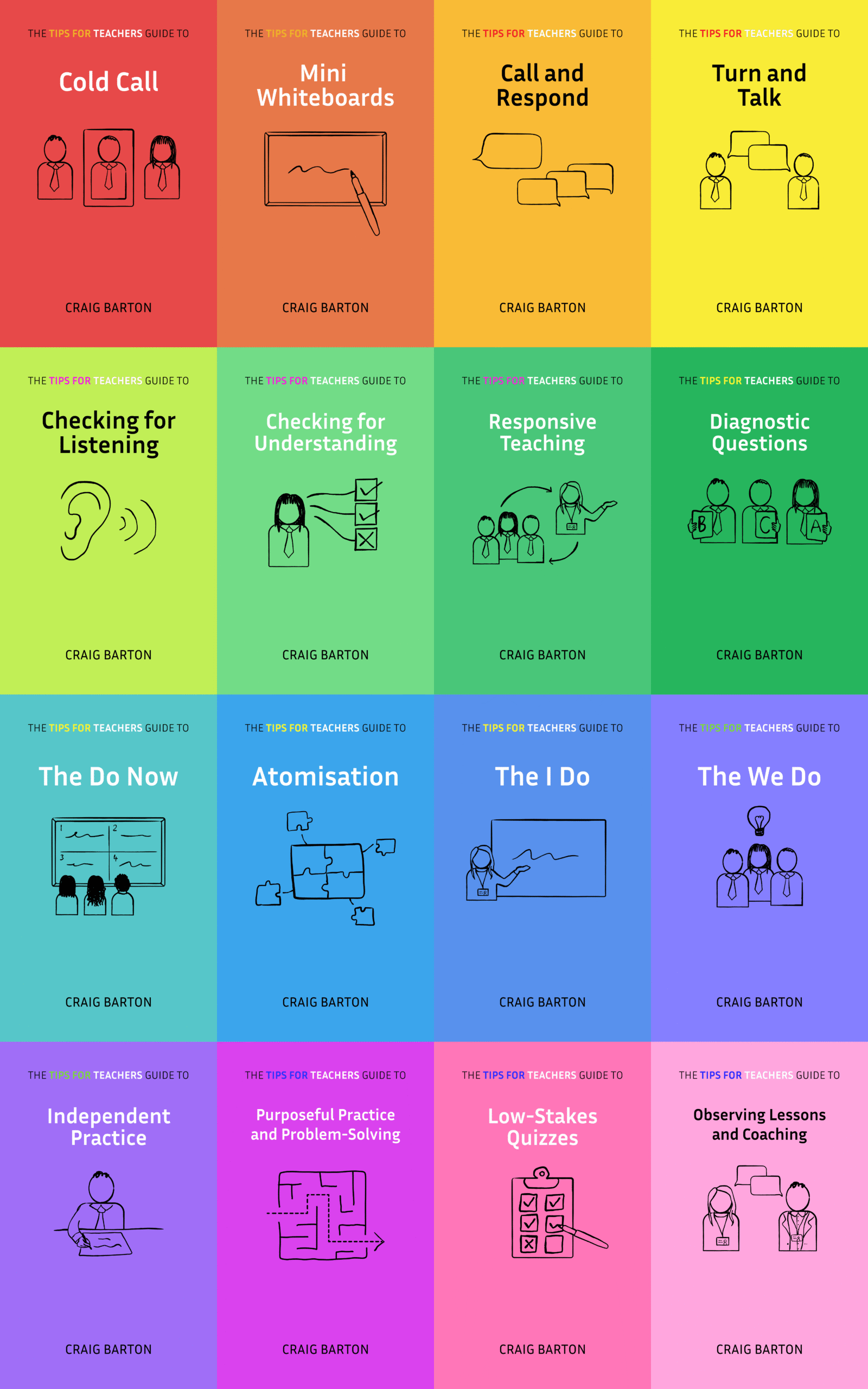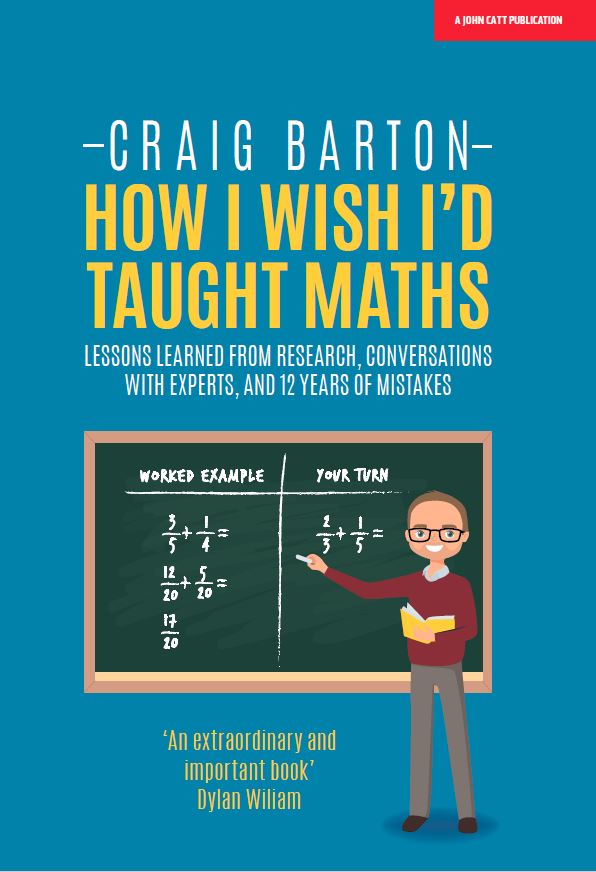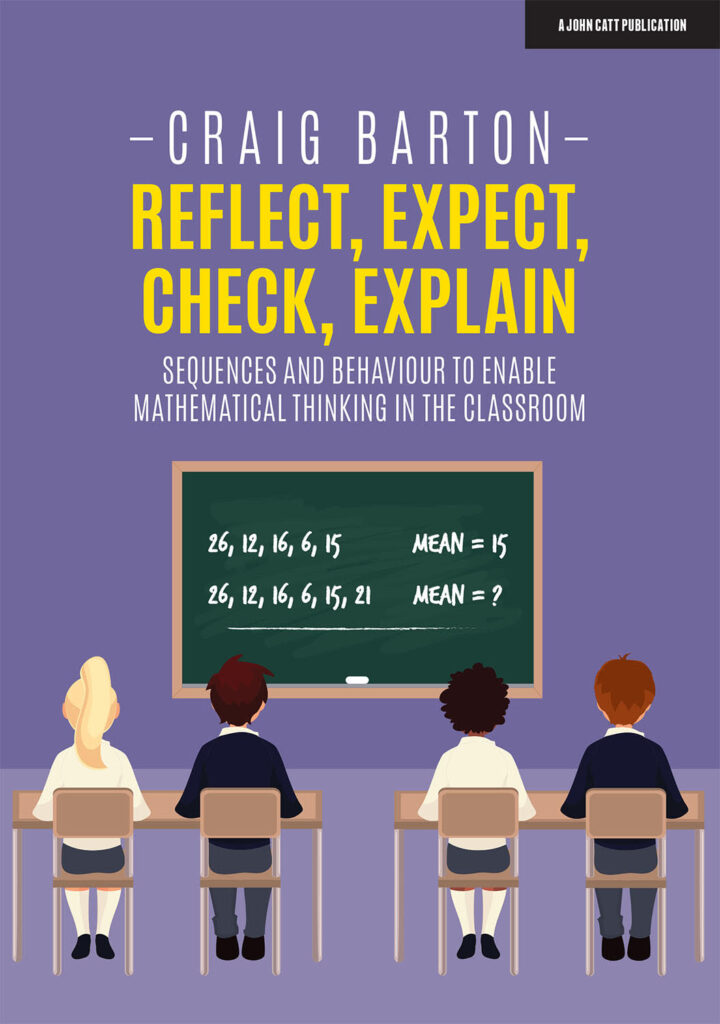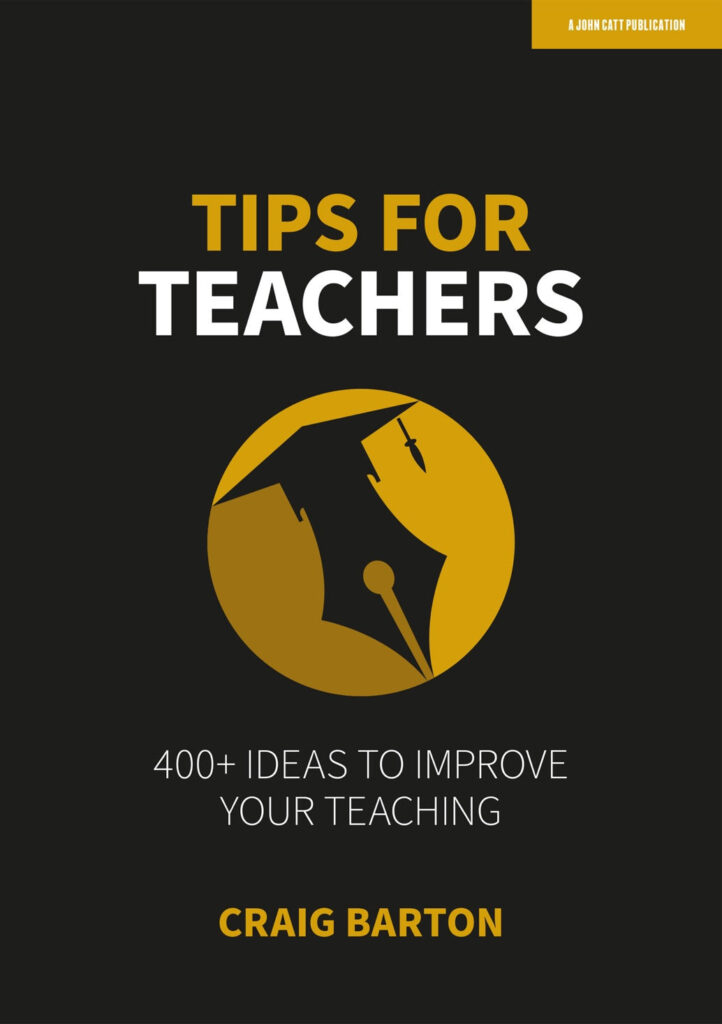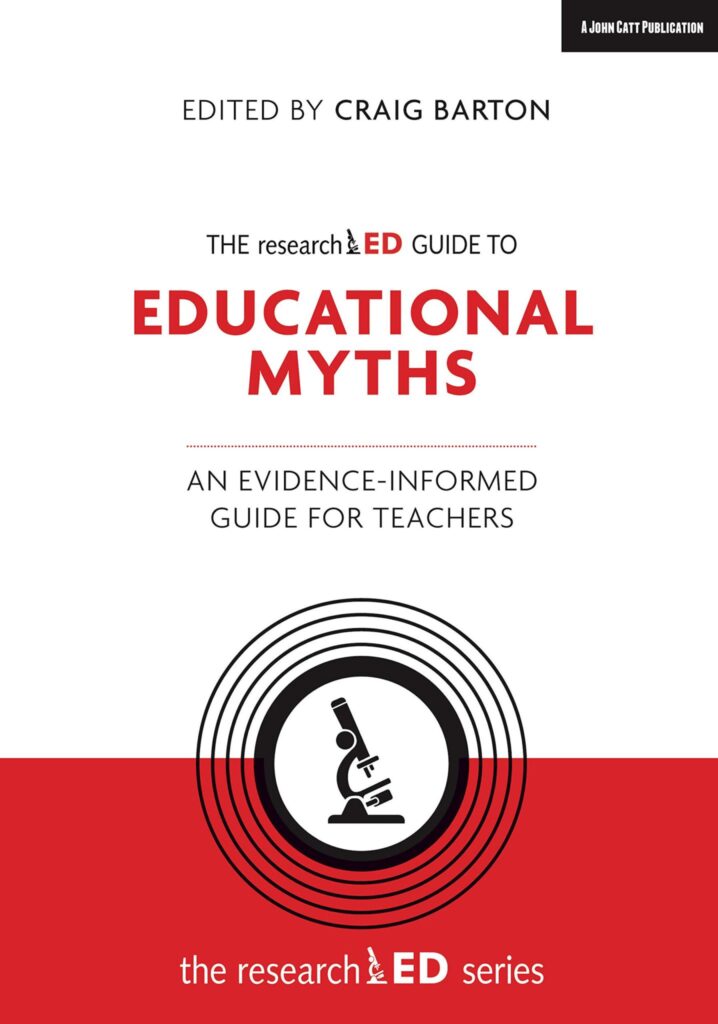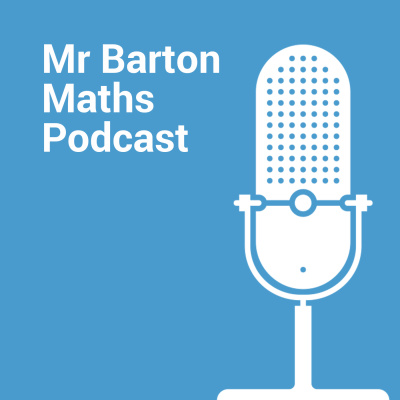
- Title: Cognitive Load Theory: Emerging Trends and Innovations
- Authors: Various
- Access the original paper here
- Listen to a deep-dive podcast:
Note: This is a collection of 16 papers
Paper summary
This collection of excerpts provides an overview of various research topics related to Cognitive Load Theory (CLT), primarily drawing from recent articles published in journals such as Education Sciences and Educational Psychology Review. The studies and reviews cover fundamental principles of CLT, its relationship with other psychological constructs, measurement techniques, applications in instructional design, and analyses of research methodologies used in the field
If teachers are to remember one thing from this collection of papers, it should be…
Effective instructional design, guided by Cognitive Load Theory, is not a one-size-fits-all approach; its success in managing cognitive load and enhancing learning often depends on adapting strategies to the individual learner’s characteristics.
***Paper Deep Dive***
Define any technical terms used in this collection
Based on the provided sources, here are definitions of some of the technical terms used:
- Cognitive Load Theory (CLT): CLT is a major theme in many highly cited articles in educational psychology. It has driven numerous empirical studies for over 30 years. CLT is rooted in the idea that working memory has a limited capacity. Information must be actively processed in working memory for it to be stored in long-term memory, and this processing imposes a cognitive load. Effective instructional design, guided by CLT principles, aims to manage this load.
- Working memory: Working memory is the cognitive system where information is consciously processed. It has a limited capacity. Processing information in working memory causes cognitive load. Theories of working memory differ in their definition, degree of modularity, the role of attention, and purpose. Chunking is a concept related to working memory. Working memory capacity can predict symptoms of distress. Verbal working memory capacity and spatial abilities are discussed as individual differences that can influence learning and cognitive load.
- Cognitive Load: This refers to the demands placed on working memory during learning or problem-solving. Cognitive load is composed of different types: intrinsic, extraneous, and germane. Subjective ratings like perceived difficulty and mental effort are used to measure cognitive load. Physiological measures such as EEG (alpha and theta wave amplitudes) and heart rate have also been investigated as indicators of cognitive load.
- Intrinsic Cognitive Load (ICL): This type of cognitive load is related to the inherent complexity of the material being learned. It is associated with complex concepts. The complexity of the material is determined by its element interactivity.
- Extraneous Cognitive Load (ECL): This type of cognitive load is caused by instructional designs that require learners to process information that is not essential for learning the core material. It results from processing that doesn’t directly contribute to schema construction. Unclear explanations are perceived as increasing extraneous load. Redundant information within instructional materials can lead to a higher extraneous cognitive load. Instructional principles like the spatial contiguity, temporal contiguity, and redundancy principles aim to reduce extraneous processing.
- Germane Cognitive Load (GCL): This type of cognitive load is associated with cognitive processes that contribute directly to learning and schema construction. It is related to processing that enhances understanding. High levels of germane load may represent high levels of understanding. There is some debate about whether germane cognitive load is a distinct type of load or part of other constructs.
- Split-attention effect: This occurs when essential information that needs to be integrated for learning is presented in different locations (e.g., spatially separated text and diagrams), requiring learners to mentally integrate them. This mental integration increases cognitive load. The study focusing on the light-switching circuit used a split-attention format to increase the need for integration. Instructional reduction of split attention is expected to particularly benefit learners with low verbal working memory capacity. Explanations for the split-attention effect include the idea that reducing extraneous load may be accompanied by an increase in germane cognitive load.
- Redundancy: In instructional design, redundancy refers to information that is unnecessary or irrelevant to the learning content, leading to higher extraneous cognitive load. When narration and identical written text are presented simultaneously (codal redundancy), the narration competes with the written text for verbal processing resources in working memory. Distinguishing different types of redundancy is important for understanding how they affect learning and cognitive load.
- Instructional design: This involves designing learning materials and strategies to facilitate learning. Cognitive Load Theory provides principles for instructional design aimed at managing working memory load during complex task learning. Effective instructional design should consider the limited capacity of working memory.
- Subjective measures (of cognitive load): These are measures where participants report their perceived cognitive load, often using rating scales. Examples include rating perceived task difficulty and invested mental effort. Scales like those developed by Paas and Leppink et al. are used for subjective cognitive load measurement. Subjective measures are prone to biases such as social desirability and inaccuracies in self-perception.
- Physiological measures (of cognitive load): These measures assess physiological responses that are thought to be indicators of cognitive load. Examples include heart rate and electroencephalography (EEG) activity, specifically alpha and theta wave power.
- EEG (Electroencephalography): A technique used to measure electrical activity in the brain, including alpha and theta oscillations. EEG measures like alpha and theta wave amplitudes are investigated as potential indicators of working memory capacity and cognitive load.
- Alpha waves: EEG oscillations observed at posterior sites, associated with a cognitive state of “relaxed wakefulness” and tending to synchronize with decreased mental workload. Alpha desynchronization refers to a decrease in alpha activity.
- Theta waves: EEG oscillations observable at frontal sites, particularly on the “frontal midline,” most prominent during focused attention. Theta synchronization refers to an increase in theta activity.
- Prior knowledge: A learner’s existing knowledge about the material. Prior knowledge is considered a critical factor for knowledge transfer. It is also related to germane cognitive load in learner-controlled environments. The expertise reversal effect describes how instructional methods effective for novices may be less effective for experts due to differences in prior knowledge.
- Spatial abilities: An individual difference related to the ability to mentally manipulate objects or understand spatial relationships. Studies investigate the moderating role of spatial abilities on the effects of AR support on extraneous cognitive load and learning outcomes. Tablet-based AR was found to reduce ECL for university students with particularly low spatial abilities.
- Verbal working memory capacity: An individual difference related to the capacity of the verbal component of working memory. Studies investigate its moderating role on the effects of instructional presentation format (like AR vs. separate display) on cognitive load and learning outcomes. For learners with low verbal working memory capacity, smartglasses-based AR induced more ECL than a separate display condition.
- Worked examples: An instructional technique providing step-by-step illustrations of how to solve a problem. Research investigates the role of worked examples in relation to cognitive load, motivation, and prior knowledge. Worked examples can improve retention and lower cognitive load compared to problem-solving, particularly for learners with high mastery approach goals.
- Augmented Reality (AR): A technology that overlays virtual information onto the real world. Studies explore the application of AR in educational settings, such as science lab work and molecular geometry instruction, investigating its effects on cognitive load and learning, considering factors like the AR device used and individual differences.
- Experimental design: A research methodology where the independent variable is manipulated, and participants may be randomly assigned to conditions. This design is considered important for establishing causal conclusions. Research on CLT predominantly uses experimental or intervention designs, in contrast to some other areas of educational psychology research.
- Intervention design: Similar to experimental design, the independent variable is manipulated, but random assignment of individuals may not always be present. These designs support causal claims, making recommendations for practice appropriate.
- Observational/correlational design: A research methodology where the independent variable is not manipulated, and quantitative data is collected to examine relationships between variables. Recommendations for practice based solely on these designs are considered inappropriate.
- Causal conclusions: Statements about cause-and-effect relationships between variables, which are best supported by experimental or intervention research designs.
- Recommendations for practice (RFP): Advice given to educators or practitioners based on research findings. RFPs are considered justified when supported by methodologies like experimental or intervention designs that can establish causality.
- Self-regulated learning: A process where learners manage their own learning, including planning, monitoring, and evaluating. Self-regulated learning skills are linked to germane cognitive load and can help manage intrinsic load in learner-controlled environments. Different methods are used for measuring self-regulated learning, including subjective reports.
- Self-monitoring: A metacognitive strategy involving tracking one’s own understanding or performance during learning. It includes verbalizations such as Judgments of Learning (JOLs) and Content Evaluation. Self-monitoring can require significant cognitive resources, especially with complex tasks.
- Attention Restoration Theory (ART): A theoretical framework suggesting that exposure to natural environments can restore directed attention capacity that has been depleted by effortful cognitive tasks.
- Stress Reduction Theory (SRT): A theoretical framework proposing that exposure to natural environments can reduce stress and anxiety by eliciting positive affective responses.
These definitions are drawn directly from the information provided in the source excerpts and the context of our conversation history.
What does this collection of papers add to the current field of study?
Based on the collection of sources provided, these papers collectively add several important dimensions and insights to the current field of research, particularly within educational psychology and the study of cognitive load theory (CLT). They highlight emerging trends, refine existing principles, explore the integration of CLT with other psychological constructs, investigate the application of CLT in diverse and modern learning environments, and critically evaluate the methodology used in CLT research.
Here’s what this collection adds:
- Expanding the Scope of CLT Beyond Pure Cognition: A significant contribution is the exploration of how cognitive load interacts with non-cognitive factors such as motivation, emotion, and self-regulated learning.
- One paper specifically investigates the moderating role of topic interest on the relationship between perceived task difficulty and invested mental effort, suggesting that low interest can increase cognitive effort on easy tasks, potentially acting as a source of cognitive load itself. This proposes a bidirectional relationship where cognitive load can influence motivation (as previously shown) and motivation can, in turn, influence cognitive load.
- Another paper explores the relationship between cognitive load and emotion, specifically cognitive reappraisal. It notes a historical lack of literature within CLT examining the impact of affective states on cognitive load, despite evidence they use the same neural architecture. This highlights a gap that needs filling.
- The role of self-regulated learning (SRL) skills and self-monitoring is investigated in relation to cognitive load and performance in learner-controlled online environments and during problem-solving. One study found that prior knowledge and SRL skills led to increased germane load and performance in law students. However, another study found that self-monitoring (thinking aloud) did not directly facilitate learning but led to longer task engagement with lower monitoring accuracy on complex tasks, underscoring the need for careful implementation of these strategies.
- Investigating Individual Differences as Moderators: The sources emphasize the importance of considering individual learner characteristics in the context of cognitive load and instructional design.
- Re-analysis of studies on Augmented Reality (AR)-supported lab work reveals that individual differences in spatial abilities and verbal working memory capacity can moderate the effects of AR on extraneous cognitive load (ECL) and learning. Specifically, tablet-based AR reduced ECL for university students with low spatial abilities, while smartglasses-based AR induced more ECL for university students with low verbal working memory capacity compared to a separate display. This adds nuance to understanding when and for whom AR is effective.
- The role of mastery approach goal orientation is linked to the effectiveness of worked examples, showing that the retention advantage of worked examples was confined to learners with high mastery levels. This suggests a mastery goal worked-example effect as a potential new CLT effect, bridging CLT research with motivational aspects.
- Prior knowledge is reaffirmed as a critical factor impacting cognitive load, performance, and transfer, especially in learner-controlled environments.
- Exploring CLT in Modern Contexts and Technologies: The papers examine how CLT principles apply or need refinement in contemporary learning environments.
- The use of AR technology in chemistry and physics is explored as a means to manage cognitive load and enhance spatial abilities, although findings highlight the need for further research considering the type of AR device and individual differences.
- Learner-controlled asynchronous online environments are studied, emphasizing the importance of considering prior knowledge and SRL skills when offering learners control and highlighting the value of fostering germane load in such settings.
- The collection includes investigation into multimedia learning principles like split-attention and redundancy in different contexts, such as split-attention in collaborative vs. individual learning and distinguishing between modal and codal redundancy.
- Differences in learning outcomes when using paper-based versus computer-based materials are discussed in relation to self-management strategies for split-attention examples, suggesting that the medium’s affordances can influence strategy effectiveness.
- Refining Understanding and Measurement of Cognitive Load: The sources contribute to the ongoing discussion about the nature and measurement of cognitive load.
- The debate about whether germane cognitive load is a distinct type of load or linked to intrinsic load is mentioned, indicating ongoing theoretical development. One study suggests fostering germane load is essential for better performance and mitigating negative cognitive load effects, while another questions whether additional effort on uninteresting easy tasks should be considered extraneous or germane load, calling for multidimensional measures.
- The use of subjective measures like perceived task difficulty and mental effort ratings is common, but the need for multi-item scales to capture different types of cognitive load is noted.
- The collection includes a study utilizing physiological measures like EEG (alpha and theta waves) to assess working memory depletion and restoration following cognitive effort and environmental exposure. While the expected restorative effect of nature imagery on EEG was not observed in this specific study, it demonstrates a rigorous methodological approach for continuous cognitive load assessment that can inform future research.
- Evaluating the Methodological Rigor of CLT Research: A dedicated paper provides a comparative analysis of the research designs used in CLT studies versus other educational psychology research.
- This review finds that CLT research predominantly employs experimental or intervention designs (14 out of 16 reviewed articles). This contrasts sharply with the broader trend in educational psychology, where there is an increase in observational/correlational studies and recommendations for practice are often made from non-experimental data.
- The paper concludes that CLT research is more scientifically rigorous in its methodology, justifying the recommendations for practice derived from these studies. This highlights a strength of the CLT research tradition.
In summary, this collection of papers significantly advances the field by:
- Expanding the theoretical boundaries of CLT through integration with motivational, emotional, and self-regulatory processes.
- Underscoring the crucial moderating role of individual differences in learner characteristics, particularly in the context of new technologies like AR.
- Applying and testing CLT principles in diverse and technologically evolving learning environments.
- Contributing to the ongoing discussion and investigation of cognitive load measurement, including the exploration of physiological methods.
- Providing empirical evidence that positions CLT research as methodologically rigorous within educational psychology, particularly regarding the use of experimental designs to support causal claims and recommendations for practice.
Collectively, these papers reaffirm the continued relevance and dynamism of Cognitive Load Theory as a framework for understanding and optimizing learning in the 21st century.
What are the characteristics of the participants in the studies?
Based on the provided sources, the participants in the various studies described exhibit a range of characteristics, reflecting diverse educational levels, ages, and backgrounds:
- One study investigating the effects of physical and mental strategies involved 84 participants, consisting of 61 female, 22 male, and 1 non-binary individual. Their mean age was 23.77 years (SD = 3.34). These participants were randomly assigned to one of four conditions and participated voluntarily after giving active consent. The learning task was presented on paper, and tests were administered digitally via Qualtrics.
- Another study exploring worked examples and mastery goal orientation included 98 grade-9 boys. The participants had a mean age of 13.9 years. They were randomly allocated to either a worked examples or problem solving group. Informed consent was obtained from all subjects.
- Research examining prior knowledge, self-regulated learning, and cognitive load in a learner-controlled online environment involved 97 master’s degree students in law. The group had an average age of 23 and consisted of 56 females and 41 males. All participants had acquired a bachelor’s degree in law, providing them with a deep understanding of core legal concepts relevant to the course. Participants gave their consent, and the study was conducted at a large urban university in Russia.
- A study on modal and codal redundancy recruited 158 participants through the online platform Prolific. The participants’ ages ranged from 18 to 66, with a mean age of 31.73 years (SD = 11.63). The gender distribution was 68.4% male, 31.7% female, 0.6% divers, and 1.3% not mentioned. Participants needed to be fluent in German and have access to a computer or tablet with audio. They were randomly assigned to one of four groups based on a factorial design. A limitation noted was potential variability in engagement and task completion conditions from using an online recruitment platform.
- A study investigating practice types on learning from instructional animations (piano playing and paper folding) involved 60 university students aged 18–44. There were 38 females and 22 males. Participants in the piano playing experiment were required to have at least one year of musical experience, including some piano playing. They were recruited to participate in a large western university study, and allocation to groups (imitative practice, real practice, no practice) was based on self-reported musical expertise.
- Research on element interactivity, attention, and social conditions (individual vs. group learning) had 192 learners as participants. The mean age was 15.50 years (SD = 0.79), with 97 male (51%) and 95 female (49%). All learners were novices in the learning topic. They were randomly assigned to conditions, and institution authorities approved their participation.
- A study exploring Augmented Reality (AR) technology in chemistry involved an original group of 49 Year 10 students (15- to 16-year-olds), which was reduced to 42 due to non-attendance. The participants were students from an independent Australian secondary school. Participants were randomly placed into either a non-AR control group or an AR-based intervention group. Participation was voluntary, with informed consent collected from both participants and their guardians.
- A study examining the influence of affective factors (like interest) on task difficulty in chemistry utilized data from an original study involving 1543 students in their final year of German lower secondary schools. These students had a mean age of 15.2 (SD = 0.87), and 51.7% were male. Teachers and headmasters decided to participate with their classes, with an option for students/parents to refuse. Tasks only required prior knowledge expected at that educational level.
- A re-analysis of three studies on AR-supported lab work involved participants from the original studies:
- Study 1: N = 50 mixed university students (80% female; mean age 25.98 years, SD = 4.67). They were mostly unfamiliar with AR but accustomed to tablets/smartphones.
- Study 2: N = 107 engineering university students (14% female; mean age 19.05 years, SD = 5.20).
- Study 3: N = 114 elementary school children (47% female; mean age 9.06 years, SD = 0.87). Participants in all three original studies had no domain-specific prior knowledge about electricity beyond school learning. It’s noted that the samples, consisting of university students and selected children, might have been homogenous in general cognitive ability, potentially impeding the investigation of moderator variables. Uneven gender distribution in the university samples is also mentioned.
- A study investigating self-monitoring (thinking aloud) during problem-solving included 65 undergraduate psychology students aged 18 to 25 (mean age 20.09, SD = 1.85). The gender distribution was 51 female, 12 male, and 2 “Other”. Only 16.9% reported English as their primary native language. Participants were recruited through ERAS. Randomization was done by alternating participant numbers. Informed consent was obtained, and compensation was in the form of course credits.
- A study examining working memory recovery through nature exposure using EEG involved 62 healthy psychology students at Erasmus University Rotterdam. Their mean age was 20.3 (SD = 1.92), and 66.7% were female. Participants were recruited through ERAS. They were instructed to have clean, dry hair and avoid caffeine before the EEG recording. Informed consent was signed, and course credits were provided as compensation.
Overall, the participant populations studied included children, adolescents, and adults across various educational stages, with varying levels of prior knowledge depending on the study’s focus. Recruitment often involved random assignment within experimental designs and voluntary participation with informed consent. Some studies highlighted potential limitations regarding sample representativeness or specific sample characteristics like gender distribution or homogeneity.
What are the key implications for teachers in the classroom?
Based on the provided sources, there are several key implications for teachers and instructional designers in the classroom:
- Optimizing Instructional Design: Cognitive Load Theory (CLT) provides insights into how the limitations and strengths of the human information processing system can be used to optimize instructional methods and learning environments. Instructional design principles should be based on human cognitive architecture. The goal is to design efficient instruction and facilitate learning by considering the limitations of working memory and reducing the need to process information not relevant to learning. CLT is seen as a valuable framework for future educational research and practice, emphasizing the need for adaptable and experimentally validated approaches in instructional design.
- Managing Cognitive Load:
- Minimize extraneous cognitive load, which is caused by poorly designed instruction or irrelevant information, by manipulating the presentation of information.
- Maximize germane cognitive load, the cognitive resources directed at dealing with intrinsic load and fostering schema acquisition. Fostering germane load is essential within learner-controlled environments as it leads to better performance and helps decrease negative effects of other types of cognitive load.
- Be aware of intrinsic cognitive load, the complexity of the content based on element interactivity and learners’ prior knowledge. Task complexity can negatively impact learning and performance if it becomes too high, potentially exceeding working memory capacity. Teachers should be mindful of task complexity.
- Designing Learning Materials:
- Strategically combine visual and verbal information. Multimedia learning environments that integrate text and visualizations can enhance learning compared to text-only presentations.
- Consider the types of redundancy and their effects. Modal redundancy (images and written text) can have positive effects on learning outcomes (e.g., construction tasks). Codal redundancy (spoken and written text) can have negative effects. However, modal redundancy may counterbalance the negative effects of codal redundancy, suggesting a compensatory mechanism. A balanced combination of both types, when presented strategically, can optimize learning outcomes and cognitive load. Be aware of the degree of contentual overlap.
- Reduce split attention effects by integrating information spatially and temporally, which can be particularly beneficial in multimedia learning.
- Use worked examples as they can improve retention and reduce cognitive load compared to problem-solving strategies, especially for students with a strong mastery approach orientation. Manipulating the presentation of information using worked or partially worked examples can help minimize extraneous cognitive load.
- Considering Learner Characteristics:
- Take into account learners’ prior knowledge and self-regulated learning (SRL) skills, especially in learner-controlled environments. Learners with low prior knowledge and low SRL skills might struggle without guidance and structure, facing increased cognitive load. Providing options for learners to control their learning should consider these characteristics. Prior knowledge, self-regulation, and the interplay with different types of cognitive load matter for learning outcomes.
- Recognize the importance of individual factors like topic interest and cognitive capacities. Teachers would be well advised to focus on raising students’ interest, especially when students are expected to process tasks or problems that are very easy for them. Low motivation can be a source of additional cognitive load for easy tasks.
- Consider cognitive prerequisites such as spatial abilities and verbal working memory capacity. Designing AR-supported learning environments should consider the interplay of learning objectives, individual cognitive strengths/weaknesses, and contextual factors. Tablet-based AR may effectively support learners with low spatial abilities by relieving their working memory load. Learners with low verbal working memory appear to be particularly affected by spatial contiguity failure that can be caused by smartglasses AR.
- Tailor the level of embodied learning (like practice types) to specific tasks and potentially gender.
- Leveraging Technology:
- When designing learner-controlled online environments, carefully consider and select the options provided, taking into account learners’ prior knowledge and SRL skills. Learner control can effectively mitigate cognitive load and promote deeper understanding.
- Augmented Reality (AR) technology shows promise for reducing cognitive load and improving learning in subjects like chemistry, particularly for molecular geometry. AR can facilitate exploring 3D structures through student movement. The benefits of using AR can be explained by the human movement effect and the signaling principle. However, the effectiveness of AR can depend on the AR device used and the age of the target group.
- Using Practice and Monitoring Strategies:
- Incorporating practice while learning from instructional animations can enhance learning efficiency, but the most effective type (real vs. imitative) may depend on the task and potentially gender.
- Self-monitoring strategies, such as thinking aloud, may help manage negative emotions and their impact on cognitive load. Careful implementation of monitoring strategies in learning contexts is important. When using self-monitoring techniques, providing sufficient time to solve a task seems to be an important factor.
- Assessment: When asking students to self-assess, teachers should be mindful of the complexity of a task, as complexity affected self-assessment accuracy in one study.
Recommendations for practice derived from CLT research, particularly from experimental methods, are based on solid ground, giving teachers specific guidance on when and how to implement strategies and approaches. However, a gap often remains between research and practice, and it is regrettably rare for instructional design to be based on human cognitive architecture.
Why might teachers exercise caution before applying these findings in their classroom?
Based on the provided sources and our conversation history, teachers might exercise caution before applying these findings directly in their classrooms for several key reasons:
- Limited Generalizability (Low External Validity): Many studies, while rigorous in their experimental design (high internal validity), may use abstract tasks that are not representative of complex, real-world learning scenarios encountered in authentic educational settings. Authentic classroom environments involve diverse materials and cognitive processes that may not align with simplified tasks used in research. This limits how confidently findings from a controlled experiment can be applied to the varied and dynamic classroom context. The generalizability of findings to practical educational contexts remains uncertain.
- Sample Specificity and Size: The findings are often based on specific sample populations (e.g., university students, engineering students, elementary school children). These samples may not be representative of the full range of students a teacher encounters, potentially having higher-than-average levels of education or homogeneity in cognitive abilities. Furthermore, many studies mention small sample sizes as a limitation, which can diminish statistical power and mean that the findings suggest potential trends rather than definitive conclusions.
- Measurement Limitations:
- Many studies rely on self-report measures for cognitive load and self-regulated learning skills. These subjective measures are prone to biases like social desirability or inaccuracies in self-perception, potentially distorting results or making it difficult to distinguish between different types of cognitive load.
- Some studies used single-item measures of cognitive load, which are insufficient to detect how different types of cognitive load (intrinsic, extraneous, germane) are specifically impacted.
- Assessments might have inconsistencies in scoring systems or involve subjective grading.
- The timing of measurements (e.g., measuring interest after a task) can limit insights.
- Floor effects in cognitive load ratings have also been observed, which can cover potential moderation effects.
- Task and Context Specificity: The effectiveness of instructional strategies or technologies can be highly dependent on the specific task, content complexity, and the learning environment (e.g., paper-based vs. computer-based materials, different types of augmented reality devices). Findings related to task complexity indicate that a task that is too complex can negatively impact learning and performance, while tasks that are too easy might mask effects or highlight motivational factors differently. Results might be specific to tasks that were not overly simple or complex for the study group.
- Need for Further Research on Interactions and Mechanisms: While CLT provides a valuable framework, the sources highlight that many interactions between factors are still being explored and are not fully understood.
- The interplay between prior knowledge, self-regulation skills, and different types of cognitive load is complex, especially in learner-controlled environments.
- The effectiveness of combining different self-management strategies requires further investigation.
- The moderating effects of individual cognitive prerequisites (like spatial ability or verbal working memory) depend on the specific AR device and target group. The relationship between cognitive prerequisites and gender also needs more study.
- The precise mechanisms by which strategies like “thinking aloud” impact cognitive load require careful implementation and sufficient time.
- The link between motivational factors (like low interest in easy tasks) causing additional cognitive load needs empirical testing.
- Understanding how learners utilize strategies or instructional features in complex environments (like learner control) to manage cognitive load is still an area for future research.
- The Research-Practice Gap: Despite the fact that CLT research frequently uses experimental methods and its recommendations are often based on solid ground compared to some other areas of educational psychology, a gap remains between research findings and classroom practice. Instructional design in practice is regrettably rarely based on human cognitive architecture. This means translating research principles into effective classroom strategies requires careful adaptation and consideration of the unique context.
In summary, while the research provides valuable insights grounded in rigorous methods, the limitations in generalizability, sample characteristics, measurement techniques, task specificity, and the ongoing exploration of complex interactions mean that teachers should approach the direct application of these findings with thoughtful consideration and potential adaptation to their specific students and learning environments.
What is a single quote that summarises the key findings from this collection?
Overall, this Special Issue reaffirms the ongoing relevance of cognitive load theory in modern learning contexts. The studies presented underscore the importance of leveraging technology and instructional design to address cognitive limitations in learners, offering promising interventions to manage cognitive load in our rapidly evolving society. Together, these findings suggest that CLT will continue to be a valuable framework for future educational research and practice, emphasizing the need for adaptable and experimentally validated approaches in instructional design
